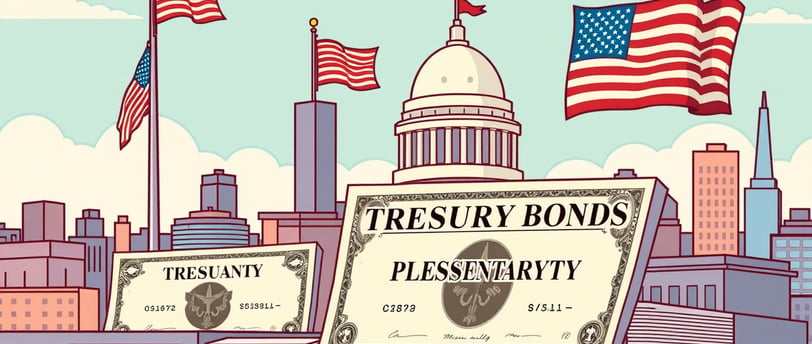Trade War and Falling Rates: The Opportunity Lies in Bonds (TLT)
While equities tremble under the weight of Trump’s tariffs, an unexpected opportunity could be brewing in the 'boring' bond market. Here’s why.
I. L. R.
4/8/20252 min read


The Stock Market in a Downturn
The stock market appears to be in free fall, with headlines about tariffs and trade wars offering no respite, and uncertainty now the new normal. While many seek shelter and others panic, an intriguing question emerges from the chaos: What if the real opportunity lies in plain sight... in the bond market?
Few Positive Catalysts... Except One
Let’s be frank: short-term positive catalysts for equities are scarce. Hopes for quick trade deals are fading against Trump’s “phenomenal or nothing” stance. Business investments could freeze amid uncertainty.
In this grim landscape, nearly all eyes turn to a potential saviour: the Federal Reserve and its likelihood of cutting interest rates.
And that, my friends, leads us straight to the bond market.
What Worries the Fed Most?
Here’s where it gets interesting. Tariffs, in theory, should fuel inflation. But the real economy is more complex. Despite temporary inflationary spikes, the consequences of the trade war itself (reduced consumer spending due to uncertainty, retaliatory measures by other nations, falling commodity prices) could offset price increases in specific goods.
So, what will the Fed do if faced with a fleeting inflation surge and structural deterioration in the labour market? Jerome Powell has already hinted: if both indicators face stress, the Fed will prioritise the one in deeper trouble. Realistically, a temporary inflation shock is less concerning long-term than sustained unemployment. The scales will likely tip toward protecting jobs—which means rate cuts .
The Opportunity in U.S. Treasury Bonds
The math is straightforward: when interest rates fall, prices of existing bonds (with fixed coupons) rise to align yields with new bonds issued at lower rates. The longer the bond’s duration, the more sensitive its price is to rate changes.
Enter the TLT ETF, which holds U.S. Treasury bonds maturing in over 20 years. If the Fed not only meets expected cuts but is forced by economic weakness to act more aggressively (deeper and earlier cuts), bond price appreciation could be significant.
With a neutral rate around 1%, the Fed has room for aggressive near-term cuts to signal support to markets.
Numbers on the Table: A Plausible Scenario
Imagine a realistic (though not guaranteed) scenario where economic pressure drives the Fed to cut long-term rates from current levels (~4%) to around 2% over the next 12–18 months.
Such a drop could translate to a 30% appreciation in the TLT ETF. Add the bond’s annual coupon of 4%, and the potential return becomes compelling.
For euro-based investors seeking currency-hedged exposure, the IS04.DE ETF offers a similar play. Those comfortable with leverage might consider TLT5.
Risk/Reward Profile
The risk? A de-escalation in trade tensions and smaller rate cuts (e.g., to 3%). Even then, bond prices would still rise, albeit modestly. The risk of rates rising from current levels—given recession clouds and Fed pressure—appears minimal.
China is already offloading a significant portion of its U.S. Treasury holdings, which could disrupt supply-demand dynamics. However, markets should absorb this given current uncertainty.
Thus, the risk/reward balance tilts favourably toward the upside.
Conclusion
While Trump’s trade war dominates headlines and fuels equity volatility, the bond market may be quietly brewing an opportunity for those willing to look beyond the noise. Pressure on the Fed to act amid economic weakness is the key catalyst.
As always, markets offer no guarantees, but bonds present a compelling case to be, at minimum, seriously considered.
